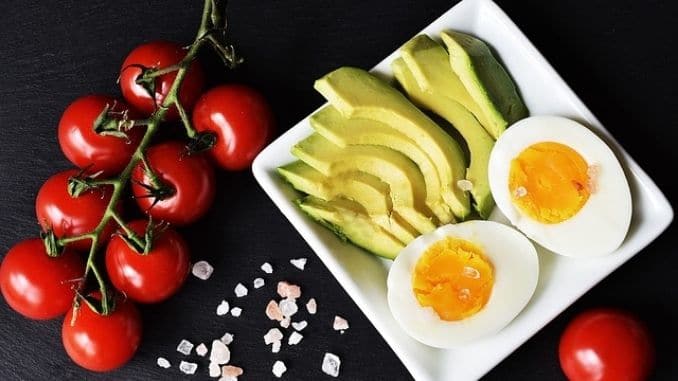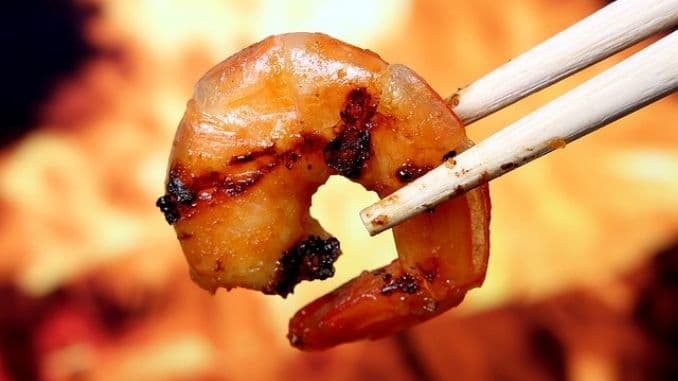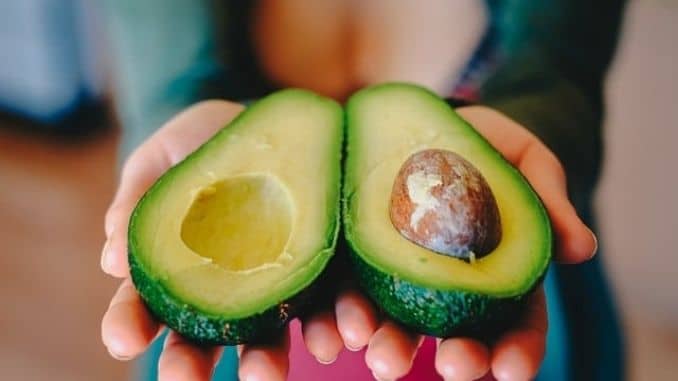
If you want to lose weight, you may be considering the ketogenic diet. It’s very popular right now, and most who try it do experience at least some weight loss.
There are some safety considerations, however. We explore the benefits and risks below and provide a list of what you can eat and what you should avoid if you decide to try the diet yourself.
What Is the Keto Diet?

What Can You Eat on the Keto Diet? The keto diet is a low-carbohydrate diet that was first used to treat certain types of epilepsy in children. To understand the diet, it helps to know how the body typically uses energy.
Most of the time, our cells prefer to use sugar — usually in the form of glucose — to create energy. The cells get this sugar via the breakdown of foods, particularly carbohydrates. When the body doesn’t have enough carbohydrates to gain easy access to these sugars, it turns to stored fat [²] as an alternative fuel.
Moreover, to get energy from fat, the body breaks down fat cells and releases molecules called “ketones.” The shift from using glucose to ketones for energy typically occurs after two to four days of eating a very low-carbohydrate diet that consists of only about 20 to 50 grams of carbs per day, though it varies from person to person. To gain perspective, 50 grams of carbs equals about three slices of bread or two small bananas.
We have solid scientific evidence showing that the keto diet helps reduce the number of seizures in children with epilepsy, sometimes as well as epilepsy medications. Scientists are also studying its potential to help people with Parkinson’s disease, Alzheimer’s disease, multiple sclerosis, and other conditions. However, most people who try the keto diet today do so in the hopes that it will help them lose weight.
A Five-month Plateau Is Commonplace

The keto diet often does work when it comes to weight loss [³], even slightly better than low-fat diets, though the effects seem to peak at about 5 months.
In one review of 13 randomly controlled trials, for instance, those on ketogenic diets lost 0.9 kilograms more than those on low-fat diets at 12 to 24 months. In another review of 11 randomly controlled trials, the ketogenic group lost 2.2 kg more than the low-fat diet group at 6 to 24 months.
However, when the data was reviewed altogether, researchers found that most ketogenic diets showed a peak weight loss at 5 months, after which weight was regained slowly.
What Can You Eat on the Keto Diet? Some research has suggested that the keto diet may produce other health benefits as well, such as improved blood sugar control. Researchers believe this is because simple carbohydrates raise blood sugar quickly, so limiting these foods helps manage blood sugar levels.
In addition to cutting back on carbs, the keto diet allows you to eat more fats, which provide your body with more ketone-based fuel and keep you feeling full and satisfied. As the body relies more on fat instead of carbs for energy, it starts to shift in other ways, too, that can have overall health benefits, including the following:
- Metabolism increases
- Hunger dissipates
- Food cravings decrease
- Levels of appetite-stimulating hormones go down
- Muscle mass increases
- Blood pressure improves
- Blood sugar levels improve (potentially reducing reliance on diabetes medicines)
- Fat loss is likely to occur
Is the Keto Diet Safe?
Most studies do show some side effects while participants are on the keto diet:
- Constipation (most likely because of low fiber intake)
- Halitosis (bad breath)
- Muscle cramps (perhaps because of lack of certain nutrients)
- Headaches
- Dizzy spells
- Trouble sleeping
- Diarrhea
- Weakness and fatigue
- Rash
- Flu-like symptoms
- The diet is also not recommended for individuals with:
- Pancreatic disease
- Liver conditions
- Thyroid problems
- Eating disorders
- Gallbladder disease or those who had their gallbladders removed

We don’t know how the diet may affect the cardiovascular system long-term. Although short-term results show benefits in blood pressure and blood sugar control, the keto diet [¹] is high in saturated fat. Moreover, that means it could cause long-term damage to the arteries, increasing buildup and narrowing them — a risk factor for blood clots, heart attacks, and strokes. There are also concerns that maintaining the ketogenic state long-term could eventually result in harm.
Furthermore, the main problem with the diet, according to most scientists today, is that it’s not nutritionally adequate. Because it cuts out many nutrient-rich fruits and vegetables, it can leave you at risk for micronutrient deficiencies, which could negatively affect your health.
Potential long-term risks include:
- Nutrient deficiencies, which means that vitamins A, C, and K and folate are often low
- Kidney stones
- Liver disease
- Osteoporosis
- Increased blood levels of uric acid, which is a risk factor for gout
Health professionals typically recommend that people limit the time they spend on the keto diet, and after a few weeks to a few months, restore nutrient-rich foods like fish, meats, vegetables, fruits, nuts, and seeds to daily meals. While on the diet, it may also help to talk to a nutritional expert about possible supplements to fill in the gaps, including B vitamins, fiber, and minerals like iron, magnesium, and zinc.
Perhaps the biggest concern is that the short-term benefits of the diet are likely to disappear once a regular diet is resumed unless the individual manages to make long-term dietary changes.
Moreover, some weight may return — often more than before — and blood sugar levels may rise again. For these reasons, it may be best to adopt an overall healthier eating plan that involves cutting back on carbs, but not limiting them quite so severely, while increasing intake of healthy fats, fruits, vegetables, and lean proteins.
Foods to Eat and Avoid While on the Keto Diet
Always talk to your doctor before starting any new diet, but particularly the keto diet. It is extremely restrictive, so you must be in good health before starting.
Moreover, realize too that the diet is not easy. Because it restricts you to only certain foods, you may find it difficult to stay on it. The typical American diet includes about 55 percent carbohydrates — ranging from 200 to 350 grams per day — so cutting back to less than 50 will be a big change.
The foods to avoid include:

- Sugary foods: Soda, fruit juice, cake, ice cream, candy and more
- Shellfish: Mussels, oysters, squid, and clams have carbs
- Fruit: All fruit, except small servings of berries
- Beans or legumes: Peas, kidney beans, chickpeas, lentils and more
- Grains or starches: Wheat-based products, oats, quinoa, farro, rye, rice, pasta, cereal, popcorn and more
- Root vegetables (tubers) and high-carb vegetables: Potatoes, sweet potatoes, carrots, parsnips, beets, corn, leeks, butternut squash, pumpkin and more
- Low-fat or diet products: The keto diet stresses high-fat, and these foods are also typically high in carbs
- Unhealthy fats: Processed vegetable oils, mayonnaise and more
- Alcohol: Most of these are high in carbs
- Condiments: Ketchup, mustard, tartar sauce, and others with sugar and unhealthy fats
- Sugar-free diet foods: These typically contain sugar alcohols, which can affect ketone levels
- Sweeteners: All sugars, honey, and syrups
- Beverages: Soda (unless it’s made with stevia), fruit juice, smoothies, and any other sugary beverages
The foods to eat on the keto diet are:

- Meat: Red meat, steak, ham, sausage, bacon, dark chicken, turkey, venison, pork, lamb, organ meats and more
- Low-sugar fruit: Blackberries, blueberries, raspberries, strawberries, cranberries, lemons and limes
- Fatty fish: Salmon, tuna, trout, mackerel and more
- Low-carb shellfish: Shrimp, crab, and lobster
- Eggs: Look for free-range or omega-3 supplemented forms
- Dairy: Full fat, no-sugar versions of butter, cream, ghee, cottage cheese, sour cream, and yogurt
- Cheese: Unprocessed forms, including cheddar, goat cheese, blue, mozzarella, ricotta and more
- Healthy oils: Extra virgin oil, coconut oil, avocado oil, and cod liver oil
- Nuts and seeds: Almonds, walnuts, flax seeds, pumpkin seeds, chia seeds, Brazil nuts, macadamia, pecans and more
- Avocados: Whole avocados or freshly made guacamole
- Low-carb veggies: Green veggies, tomatoes, onions, peppers, raw spinach, kale, broccoli, cauliflower, asparagus, bok choy, cabbage, celery, chard, collards, cucumbers, endive, lettuce, olives, radishes, summer squash, zucchini, bell peppers, arugula, mustard greens, sprouts, romaine, watercress and more
- Condiments: Salt, black pepper, healthy herbs and spices, unsweetened ketchup and oil-based salad dressings
- Beverages: Water, unsweetened coffee and tea, filtered water with lemon or lime, full-fat milk, seltzer, and unsweetened coconut milk
- Dessert: Dark chocolate, unsweetened with 70% or more of cacao
- Sweeteners: Erythritol, maltitol, monk fruit, sorbitol, stevia, and birch xylitol
For your guide to the best foods that heal and slim your body, make sure to check out The Best Foods that Rapidly Slim & Heal in 7 Days, here!

